Subphylum Vertebrata | Phylum Chordata Class Reptilia Suborder Sauria Rank Species | |
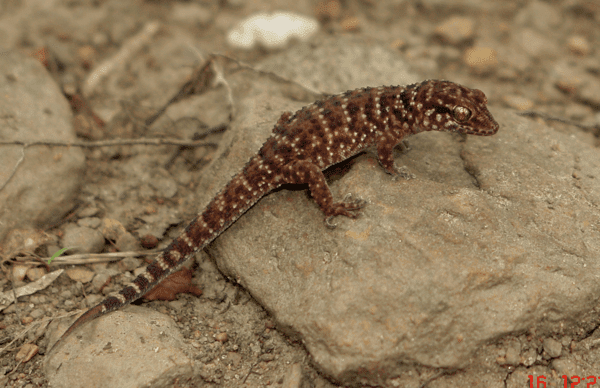 | ||
Similar Heteronotia, Gehyra, Gehyra variegata, Ctenotus, Diplodactylus | ||
Day old heteronotia binoei
Heteronotia binoei, commonly known as Bynoe's gecko, is a species of lizard endemic to Australia. One of Australia's least habitat-specific geckos, it occurs naturally across much of the country, and has also established in areas where it does not occur naturally, such as urban Perth, Western Australia. It is dark brown to reddish brown, depending on the colour of the ground upon which it lives. There are irregular light bands with dark edges along its back.
Contents
- Day old heteronotia binoei
- Resting heteronotia binoei
- Etymology
- Description
- Geographic range
- Habitat
- Reproduction
- Diet
- Predators and threats
- References
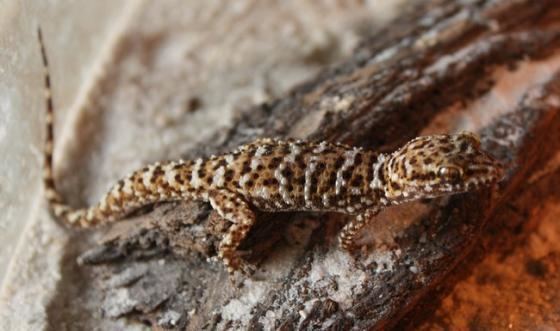
It is one of a small number of vertebrate species that are known to reproduce by parthenogenesis.
Resting heteronotia binoei
Etymology
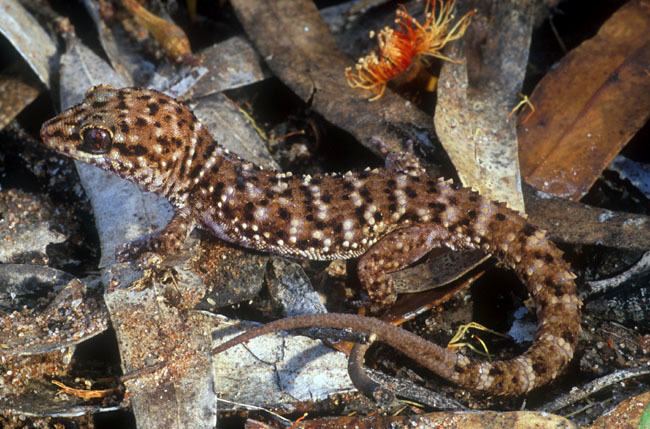
The specific name, binoei, is in honor of British naturalist Benjamin Bynoe (1804-1865), who was a naval surgeon aboard HMS Beagle with Charles Darwin.
Description
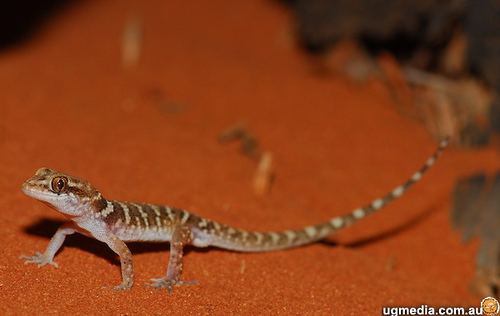
The Bynoe's gecko is a slender, long-tailed species which may grow to a total length (including tail) of 11–12 cm (4.3–4.7 in). They are covered with small scales which appear to be rough, but are soft to touch. They have slim toes which end with strong claws but unlike many other gecko species, they do not have expandable toe pads. They have a large head and eyes, with eyes lacking eyelids but being covered with transparent scales. To keep eyes clean, it wipes dirt and dust from the lenses with its tongue. They are covered with small spine like ridges which run down the length of their back, giving them their alternative name "prickly gecko". Colours include yellow, cream, beige, black and white with most carrying at least 2 of these colours. Stripes, speckles, spots or blotches may cover the gecko. They usually have an indication of a dark temporal streak and another dark streak along the canthus rostralis. Their lips are whitish and usually lightly fleckled with a darkish brown.
Like many species of gecko, a wide array of calls can be made with its well-developed vocal chords.
Geographic range
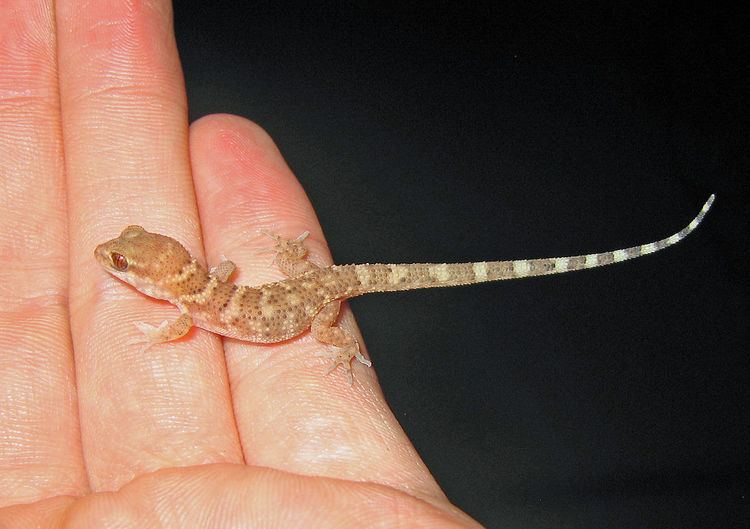
The Bynoe's gecko is found in all mainland Australia's states, except the ACT. They are endemic to Australia and are not found in humid parts of the southeast and southwest. It also inhabits many islands off the west coast and has large populations on Barrow Island.
Habitat
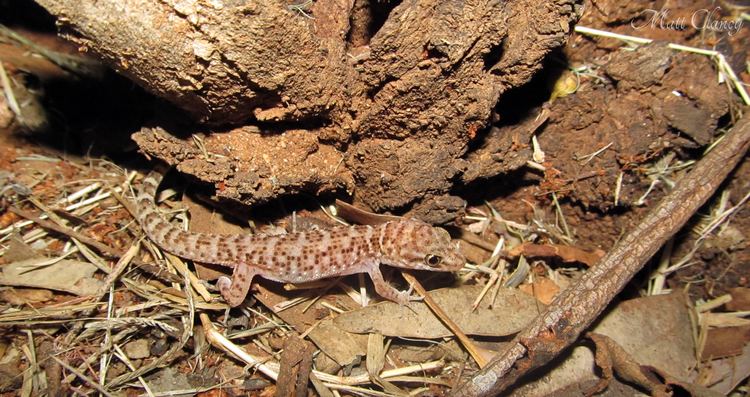
The Bynoe's gecko occurs in many habitats throughout Australia. They are most commonly found in woodlands, grasslands, and disturbed habitats, all being open and dry. They can also be found in tropical rainforests, central deserts, and coastal sand dunes. As they are a terrestrial species, they take shelter under all types of ground cover including leaves, logs, stumps, stones, termite mounds, loose bark at the base of trees, and animal burrows. They have been found to shelter under man made habitat. Furthermore, the Bynoe's gecko is often the most abundant reptile found in may arid areas in Australia.
Reproduction
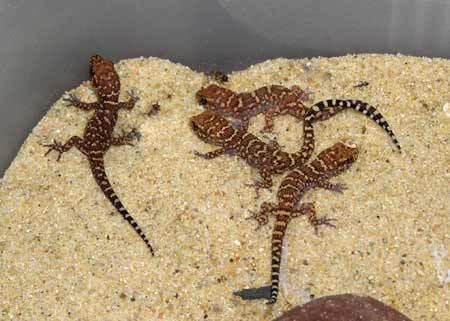
In Australia, the Bynoe's gecko has been found to be in ideal breeding conditions between July and September. Sexual maturity is reached in 1 to 3 years and females lay 2 eggs over the months of September to January. Eggs are soft shelled when laid, but become hardened and brittle when exposed to the air. These eggs are usually deposited under rocks, inside animal burrows or inside logs. They only produce 1 clutch per year. Females on Barrow Island reproduce by parthenogenesis, a form of asexual reproduction where the growth and development of the embryo occurs without fertilisation by a male.
Diet
The Bynoe's gecko is mainly active at night. They leave their shelter and hunt various invertebrates including moths and grasshoppers throughout the night. They hunt among leaf litter or in bare open spaces and will occasionally climb trees or within rocks to source food.
Predators and threats
Like many other geckos, the Bynoe's gecko has many predators. They are able to flee rapidly and quickly when disturbed but are likely to still be vulnerable to attack by a range of other predators including larger lizards.
